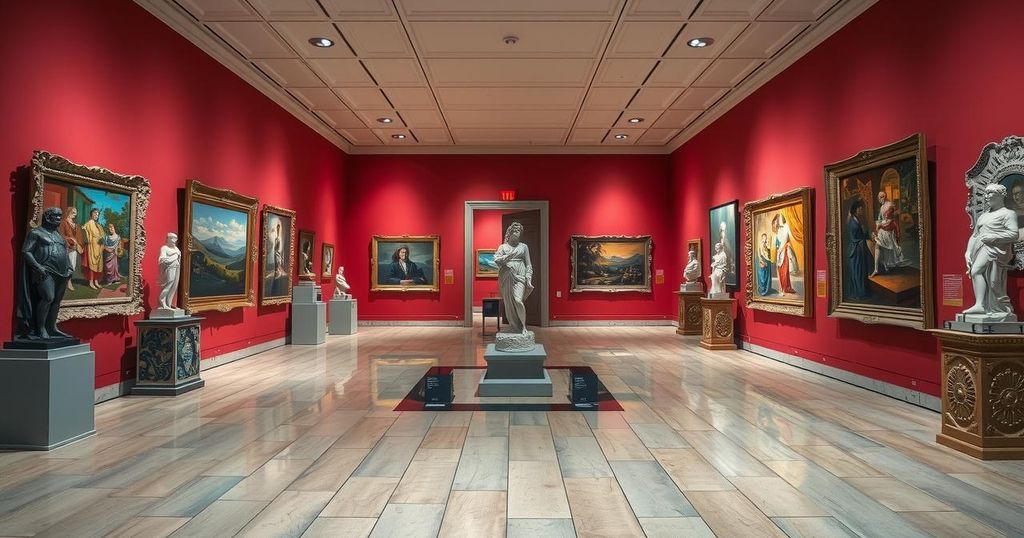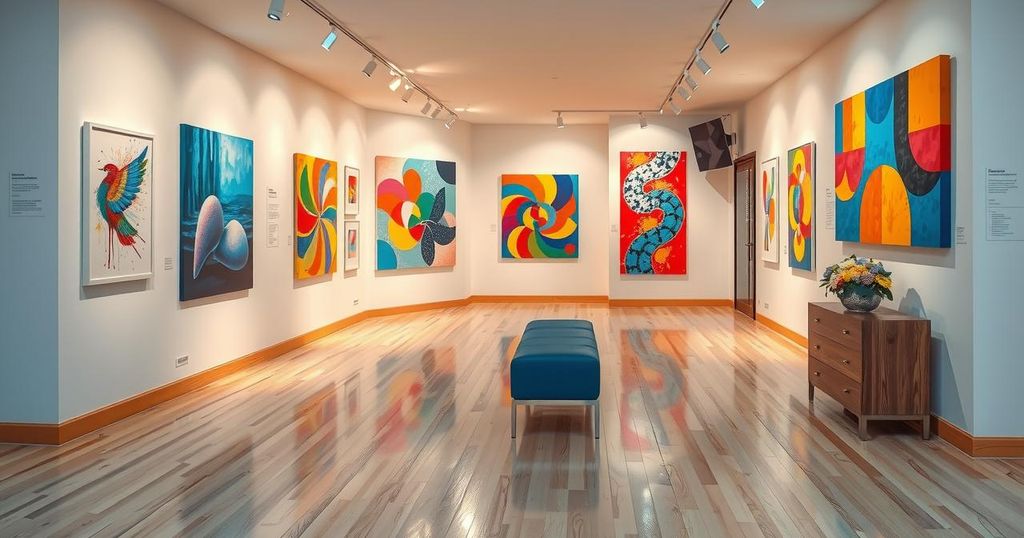“Shadow Self” is Teresa Pągowska’s first UK solo exhibition, showcasing her evolution as a pivotal figure in postwar Polish art. Through her innovative use of canvas and exploration of female representation, Pągowska reflects on themes of duality and identity. The exhibition features over fifty years of her artworks, including paintings and works on paper, available for viewing until April 2nd at Thaddaeus Ropac, London.
“Shadow Self” is Teresa Pągowska’s first solo exhibition in the UK, held at Thaddaeus Ropac in London. The exhibition showcases over five decades of her significant contributions to postwar Polish art. Through her sensitive portrayals of the female form and innovative canvas work, Pągowska’s art evolves from modernist styles to intimate and liberated expressions, highlighting her exploration of themes like the shadow and human experience.
Pągowska (1926-2007) was influenced early on by the Colourists, a group of Polish artists from the 1920s and 1930s. She took part in pivotal exhibitions that moved away from the conservative Socialist Realism aesthetic. By the 1960s, she engaged with Art Informel and the New Figuration movement, developing a distinctive style that conveyed personal and experiential depth.
Art historian Cornelia Butler noted how Pągowska was among the first Polish artists to challenge traditional representations of women. Her works reveal the complexities of the modernist body, addressing the trauma of postwar Europe without succumbing to objectification. Pągowska believed that the human figure embodied a profound essence, stating, “What occupies me most profoundly is the human figure. Not only because of the richness of form. I think that it is the human body that contains the most content-related magic.”
The motif of the shadow plays a central role in Pągowska’s work, representing duality and mystery. Shadows navigate between the body and its surroundings, with works like “Bath” (1974) depicting this interplay. The exhibition features domestic scenes and seascapes that evoke deep emotional atmospheres, inviting viewers to contemplate the dualities present in Pągowska’s art.
In the mid-1970s, Pągowska began to use raw canvas, challenging conventional painting norms. This experimentation reduced colour intensity and introduced new textural possibilities. In “Monochrome XXXXC” (1975), the female figure is suggested through unpainted canvas, revealing her innovative approach to expression and imagination. Her later works include hybrid forms, blending human and animal characteristics for enriched narrative depth.
The exhibition also presents her works on paper, showcasing gouaches and collages that provide insight into her creative process. Pągowska often employed everyday materials, appreciating their unique textures and imperfections. She remarked, “I have a taste for errors and mistakes, which when skillfully accumulated, may acquire their special power…they give the picture its character.”
Visit the “Shadow Self” exhibition until April 2nd at Thaddaeus Ropac, London. It offers a comprehensive look at Pągowska’s captivating exploration of form, identity, and artistic innovation.
Teresa Pągowska’s “Shadow Self” exhibition at Thaddaeus Ropac highlights her remarkable journey in postwar Polish art, featuring her exploration of female representation and the thematic significance of shadows. The exhibition captures five decades of her innovative style, moving between abstraction and expressive human forms, while honouring her unique approach to materials and textures. Visitors have until April 2nd to engage with her profound and evocative works, reflecting on the deeper meanings inherent in the human experience.
Original Source: contemporarylynx.co.uk







